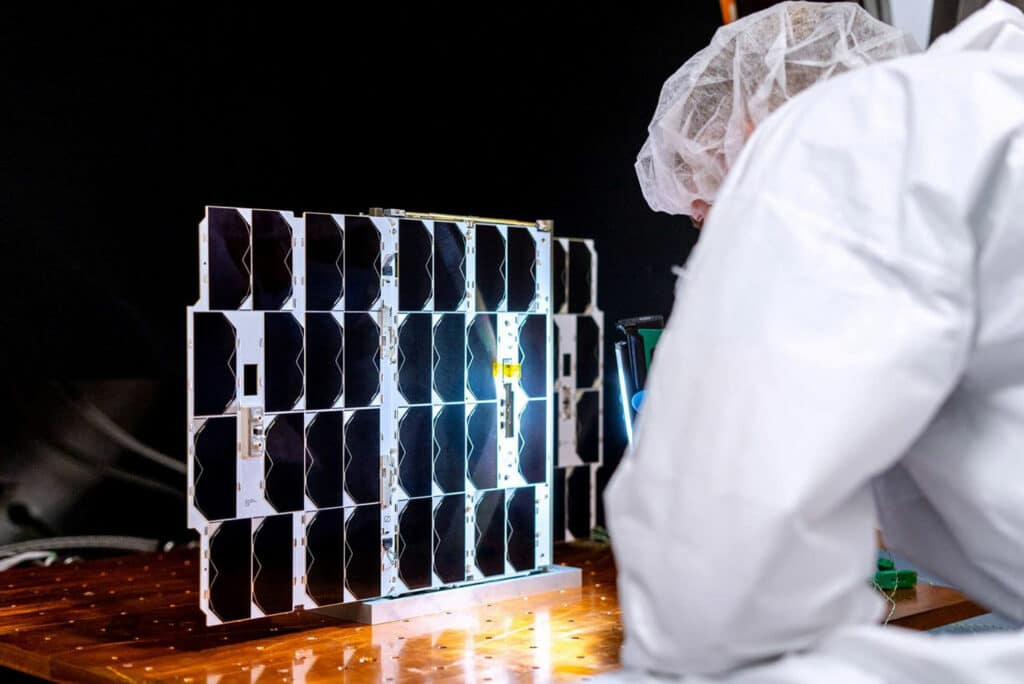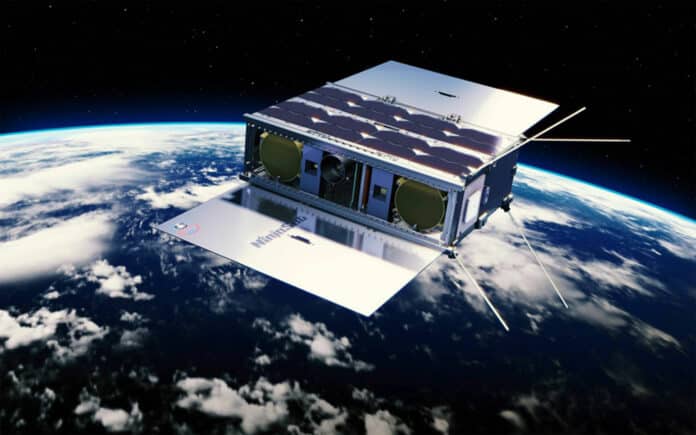When it comes to discovering transient objects, all-sky surveys play a crucial role. In reality, however, it is impossible to achieve high sensitivity, high cadence, wide sky coverage, and broad wavelength range at the same time. This is where observations with small telescopes can come in significantly.
Even though they may not have the same capabilities as larger observatories, they can still perform high cadence monitoring and offer flexible operations, playing a complementary role to large observatories.
Now, a Lithuanian manufacturer NanoAvionics, the Japanese research institute Riken, and Mitsui Bussan Aerospace have collaborated on launching a new 6U-size CubeSat X-ray observatory, NinjaSat, to conduct a flexible X-ray observation program. The astronomical NinjaSat X-ray observatory mission aims to observe X-ray photons from bright X-ray objects in the universe.
The NinjaSat mission is set to launch this fall on SpaceX’s Falcon 9 Transporter rideshare mission and will spend two years in low Earth orbit.
For the NinjaSat mission, NanoAvionics is preparing to ship a nanosatellite to study black holes and neutron stars from low Earth orbit. The company’s flight-proven multi-purpose 6U M6P nanosatellite bus and integrated science payloads developed by RIKEN will be provided for the mission. The startup has also provided satellite testing services for this mission.

Once in low Earth orbit, the payload integrated into the satellite will track the X-ray photons that suddenly brighten in X-rays coordinating with on-ground optical observatories to study how matter accretes to these compact objects.
The NinjaSat X-ray observatory will also perform much-demanded follow-up observations of transient objects discovered by the MAXI surveys. The Monitor of All-sky X-ray Image (MAXI) instrument is an X-ray camera mounted on the Japanese Experiment Module of the International Space Station (ISS). It discovered many new black holes in our Galaxy that suddenly brighten in X-rays.
One of the targets includes Scorpius X-1, one of the brightest X-ray objects hosting a fast-spinning neutron star and a candidate for coherent gravitational waves. Riken, the mission’s funder, stated that NinjaSat allows high cadence monitoring and flexible operations, which will be valuable for observing these transient sources in time-domain astronomy.
The satellite is equipped with a pair of deployable solar panels, two identical Gas Multiplier Counters (GMCs) for measuring individual radiation events, two Radiation Belt Monitors (RBMs) for safety monitoring of background particle environments, and a one-star tracker for positioning. Recorded payload data will be downloaded to the ground via S-Band.
